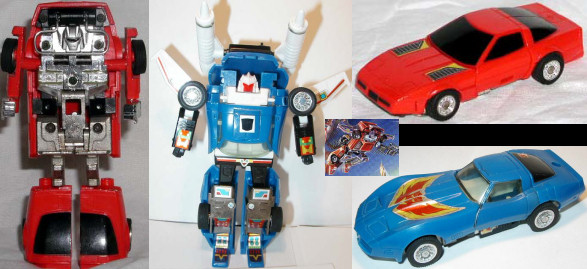

OSU’s College of Engineering received $500,000 in funding from the Advanced Robotics for Manufacturing, or ARM, Institute to develop the system, while AFRL’s Materials and Manufacturing Directorate provided project leadership and oversight as well as an additional $150,000 in post-doctoral research support to OSU.Ī multidisciplinary team based in OSU’s Artificially Intelligent Manufacturing Systems, or AIMS, Laboratory, primarily led development efforts, oversaw system integration and advised on the use of artificial intelligence decision making software.
#Tinker and transform gobot robot file software
The addition of artificially intelligent software allows the robotic system to make significant forming decisions on its own without the need for a human operator, offering near-term cost- and time-saving benefits as well as an improved ability to replace hard-to-find aircraft structural parts. But in the far term, we want to be able to make almost anything.”ĪI-FORGE uses incremental forming, a heat-assisted metalworking process that permits users to manufacture small lots of customized manufactured parts for military aircraft. “In the near future, this system will allow us to acquire the specific auxiliary components and tools that are required to successfully support DAF missions. Sean Donegan, digital manufacturing research team lead, AFRL’s Materials and Manufacturing Directorate. “There is an immediate need to obtain customized forged components that we might only require a few of, but which have significant lead times,” said Dr. Department of the Air Force but also to significantly impact the future of metamorphic manufacturing, also called robotic blacksmithing. The artificially intelligent system, nicknamed AI-FORGE, was funded primarily by the Advanced Robotics for Manufacturing, or ARM, Institute, and promises to not only improve aircraft readiness for the U.S. If we want the object to be created only when the object is created, then we will use ROBOT_LIBRARY_SCOPE = ‘TEST SUITE' in the class.WRIGHT-PATTERSON AIR FORCE BASE, Ohio (AFRL) - Researchers from the Air Force Research Laboratory, or AFRL, have combined efforts with The Ohio State University, or OSU, and industry partners CapSen Robotics and Yaskawa Motoman to successfully demonstrate an autonomous robotic incremental metal forming prototype at the Warner-Robins Air Logistics Complex, or WR-ALC, a tenant of Robins Air Force Base in Georgia, in late January 2023. That's a lot of overhead and it keeps piling as the number of test cases increase.

In the output, we can see that the object was created 3 times. If we look at classA.py, the log to console is called only when the class is created. Here, both class name and filename is classA.įor calling the class function, we just have to call. It is important that the class name matches the filename. Terminal report for robot Import Python classes If we run $ robot tests.robot, we see the following output. Here, BuildIn().log_to_console does printing in the Robot terminal. To add keywords inside the function, we use the keyword decorator.

Generally, it's recommended that for Python files that are imported into Robot, keep the following import in the Python file: try:įrom import BuiltInįrom import _Misc We can assign keywords for Python functions. To import the Python script inside Robot, we use the keyword Library in the Robot file under settings. We have a simple function that adds 1 to the input number. Let's start by creating a basic Python script that adds 1 to the integer. Let's start by creating and starting the virtual environment. In this short article, we will learn to use Python libraries inside your test suite in the Robot framework. It makes the automation process faster and cleaner. For most of our test cases, we would prefer to write the logic in Python and import the keyword in Robot. Learning Robot framework's keywords is not worth your cognitive power unless the company you're working for has specially told you to use pure Robot keywords, in which case, may God bless you.
#Tinker and transform gobot robot file code
It allows tremendous flexibility to your code and helps you create your own custom keywords that are better suited for your task than its robot counterparts. Since the Robot framework is built on top of Python, importing Python modules inside the Robot framework is a simple process.


 0 kommentar(er)
0 kommentar(er)
